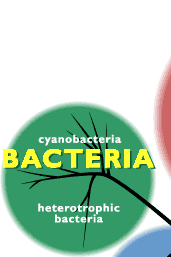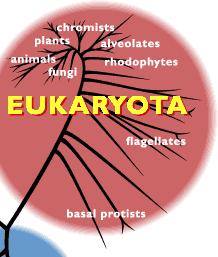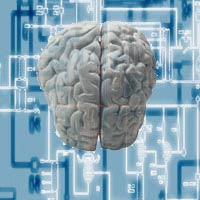The engulfment of the organisms that became mitochondria and chloroplasts predates the formation of multicellular organisms by a huge expanse of time and is not a a good metaphor for what happened in the transition from single cells to multicelled organisms. If multicellular organisms had formed from multiple species of single cells, even closely related ones, our genes or cell structures would bear the markers of this merger. No such markers exist.
Actually one such marker clearly does exist;
Mitohondrial DNA. But aside from that the symbiosis of these two species create both a physical advantage that fosters the subsequent cellular differentiation process by dramatically increasing the energy production ability of the cell to offset the needs of other cell to specialize for function. In other words this symbiosis makes "possible" the latter mulitcellular evolution that take that cumulative colony building behavior and catalyzes the possible mutations.
This would explain why multicellular differentiation appears to "explode" into the fossil record and is NOT seen to appear as one single organism adapting and dominating a niche and then simply remaining successful. We see divergent evolution immediately as a consequence of advent of multicellular organization. We see convergent evolution of competing species (a few million years) not long after that.
Also there is a second aspect that can be shown to have developed along side the "Standard Model” of Natural selection. And this symbiosis is "
behavioral while you are correct that mitochondrial DNA is "unique" in this respect of being clearly identifiable and distinct genetic what they clearly foster the pathway into creating are entire phyla of plant species that begin to adapt through an alternative strategy of strict competition and this is by selective competition and behavioral symbiosis. we still see this in the myriad of ways plants have adapted to take advantage of animal motility for their own propagation including fruit bearing, grappling, pollination through so many strategies the mind boggles.
Example:
http://www.nature.co.../030519-13.htmlProperly called Armorphophallus titanum, the blue whale of botany comes from the rainforests of western Sumatra, Indonesia. It was discovered in 1878 by the Florentine botanist Odoardo Beccari. He sent the seeds to Kew Royal Botanical Gardens in London, where the first cultivated specimen flowered in 1889. Famously, three blooms appeared at Kew last year.
Hothouse Titan Arums rarely flower, but when they do, they are hard to ignore. The colossal lily-shaped blooms smell of rotting flesh - hence the plant's nickname 'the corpse flower'. By mimicking a carcass in decay, the brownish flowers attract insects that deposit their eggs inside the plant, spreading its pollen in the process.
Nature News Service / Macmillan Magazines Ltd 2003
Yes they resist this but they also do so by virtue of the success of having violated it and Cyanobacterium clearly are forerunners all evolution for it was their behavior as a species that provided the
"terraformation" of Earth into a
less hostile environment.
Now let me make sure I am clear on this point,
I do not disagree with anything that you have said about the evolution of multicellualrization, but what I am suggesting is that not only was there more than one method for this process (and the resulting evidence does supports this) and second there existed a dynamic relationship between the two processes that altered evolution on earth by dramatically improving the ability to adapt and survive mutation. More importantly we still see this primitive form of gene sharing as I suggested in two distinct environmental models, bacterial adaptive sexuality, and viral independence as a consequence of self replicating genes that are only quasi alive.
what is important in the second part is that the bacterial phage characteristics of viruses alter the fundamental mechanism of evolution by increasing the rate AND specificity of mutation, increasing the "odds" of successful adaptation to environmental conditions.
Still an excruciatingly slow process by human standards but qualitatively as distinct for a "rate" of change as say compare a snail and spaceship. In fact we are beginning to adapt the process in a recent breakthrough utilizing viral transcription for a successful gene insertion in adult mammals.
BTW, (though off topic) this little noticed development belongs in its own thread as it heralds a big step forward if confirmed and then refined into being able to insert characteristics genetically that we find desirable in the future.
http://story.news.ya...me/hearing_loss
Excerpt:
For the reported study, Raphael and colleagues worked with a gene called "Math1," which must be active for a fetus to develop the initial supply of hair cells. In a surgical procedure, they squirted a solution containing Math1 genes into cochleas of adult guinea pigs. The genes had been placed inside viruses, which acted like shuttles to get the genes into the animals' cells.
One and two months later, the researchers examined the cochleas of 14 treated animals. All showed immature hair cells, usually between 25 and 50. Apparently, the treatment had transformed some non-sensory cells into hair cells, Raphael said.
Many of the immature cells were outside the region where hair cells normally grow, so those clearly resulted from the treatment, Raphael said. Despite their odd location, it's possible that at least some of them might be able to function, he said.
http://www.jneurosci.org/
While I should say upfront this is an "artificial” procedure it is however one that exploits an already existing characteristic of viral phages, which in themselves parallel what Cyanobacteria did in the first place when it inserted itself into those first eukaryotes and changed how life evolves. Clearly we have complex interactions of genetic information that at the most primitive is somewhat clear but is perhaps affecting complex organisms in ways we haven't yet effectively included in our phylogenic modeling.
The cyanobacteria have an extensive fossil record. The oldest known fossils, in fact, are cyanobacteria from Archaean rocks of western Australia, dated 3.5 billion years old. This may be somewhat surprising, since the oldest rocks are only a little older: 3.8 billion years old!
Cyanobacteria are among the easiest microfossils to recognize. Morphologies in the group have remained much the same for billions of years, and they may leave chemical fossils behind as well, in the form of breakdown products from pigments. Small fossilized cyanobacteria have been extracted from Precambrian rock, and studied through the use of SEM and TEM (scanning and transmission electron microscopy).
http://www.ucmp.berk...ia/cyanofr.html
http://www.ucmp.berk...reedomains.html



Three Domains of Life
Until comparatively recently, living organisms were divided into two kingdoms: animal and vegetable, or the Animalia and the Plantae. In the 19th century, evidence began to accumulate that these were insufficient to express the diversity of life, and various schemes were proposed with three, four, or more kingdoms. The scheme most often used currently divides all living organisms into five kingdoms: Monera (bacteria), Protista, Fungi, Plantae, and Animalia. This coexisted with a scheme dividing life into two main divisions: the Prokaryotae (bacteria, etc.) and the Eukaryotae (animals, plants, fungi, and protists).
Recent work, however, has shown that what were once called "prokaryotes" are far more diverse than anyone had suspected. The Prokaryotae are now divided into two domains, the Bacteria and the Archaea, as different from each other as either is from the Eukaryota, or eukaryotes. No one of these groups is ancestral to the others, and each shares certain features with the others as well as having unique characteristics of its own.
Within the last two decades, a great deal of additional work has been done to resolve relationships within the Eukaryota. It now appears that most of the biological diversity of eukaryotes lies among the protists, and many scientists feel it is just as inappropriate to lump all protists into a single kingdom as it was to group all prokaryotes. Although many revised systems have been proposed, no single one of them has yet gained a wide acceptance.
A fourth group of biological entities, the viruses, are not organisms in the same sense that eukaryotes, archaeans, and bacteria are. However, they are of considerable biological importance.
I am arguing that the viruses are more than a simple “consequence” of liberated genes they are a mechanism for adaptive mutation that has become environmentally stable and somewhat independently competitive but still overtly functionally parasitic, except in specific instances where the interaction of viral genetic transcription improves the odds of a successful mutation sooner in relation to environmental stress.
Obviously this is a radical theoretical departure from parochial evolutionary genetics but what I am proposing is a dynamic relationship of Selective Mutation through gene sharing that won’t show up as distinct because the original species’ full genome is not merged, only segments and these would appear as mutations not as mergers per se.






















































